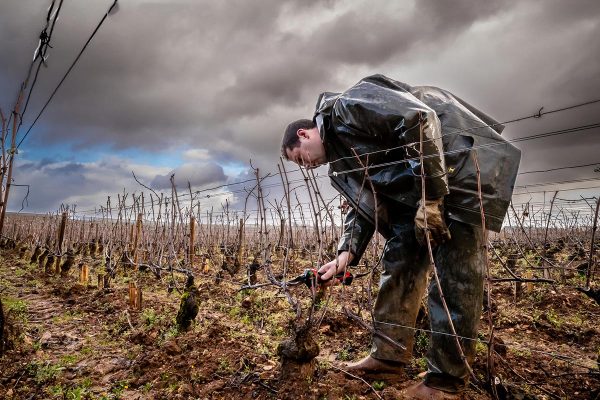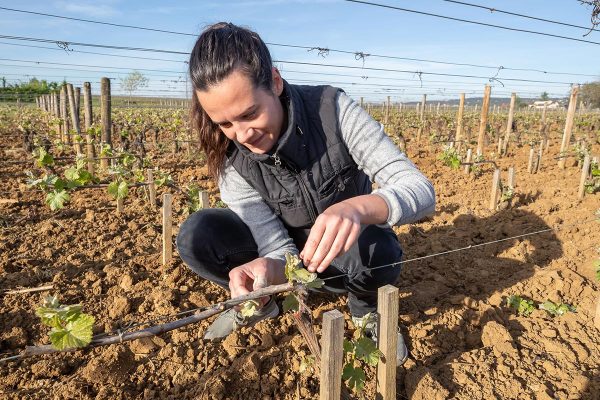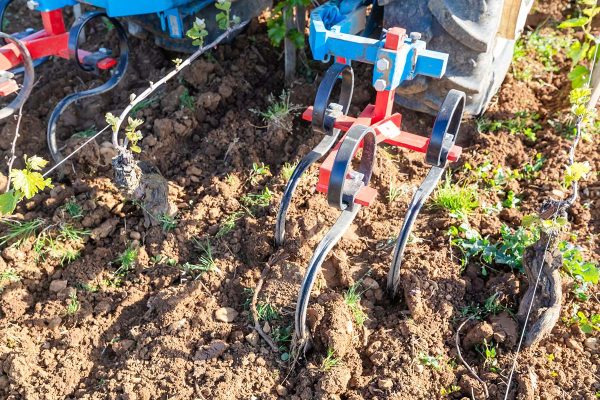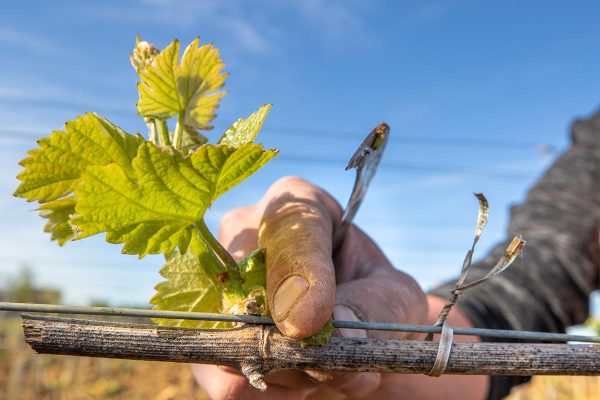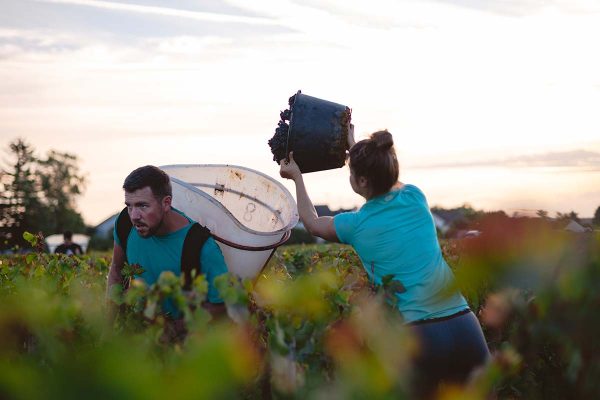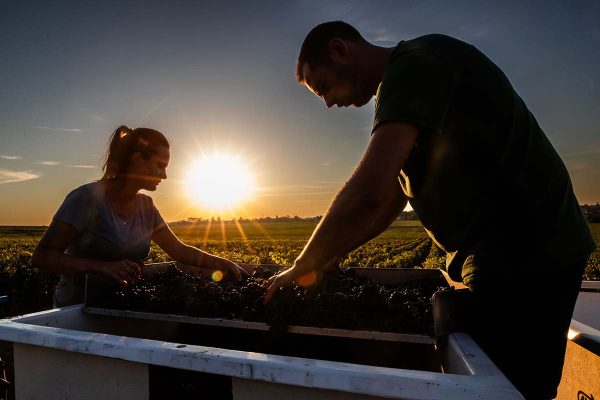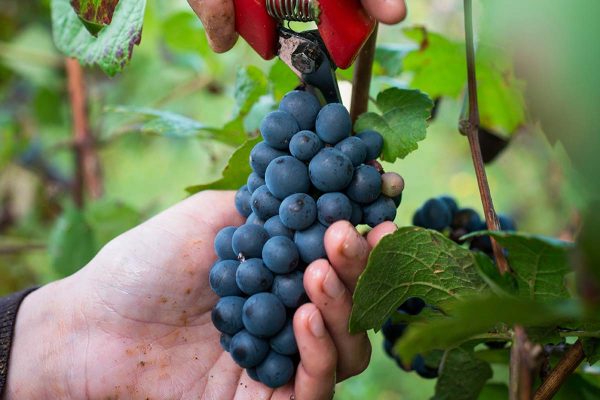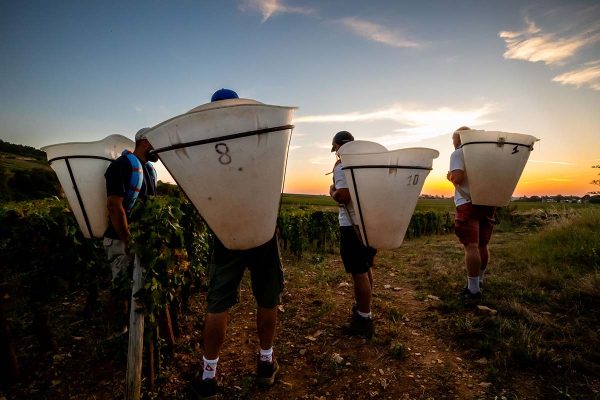The vines
‘The vineyard is our pantry’
Our terroirs are certified High Environmental Value and deserve our respect. We make the work in the vineyard our priority, and commit, year after year, to sustainable and environmentally friendly viticulture.
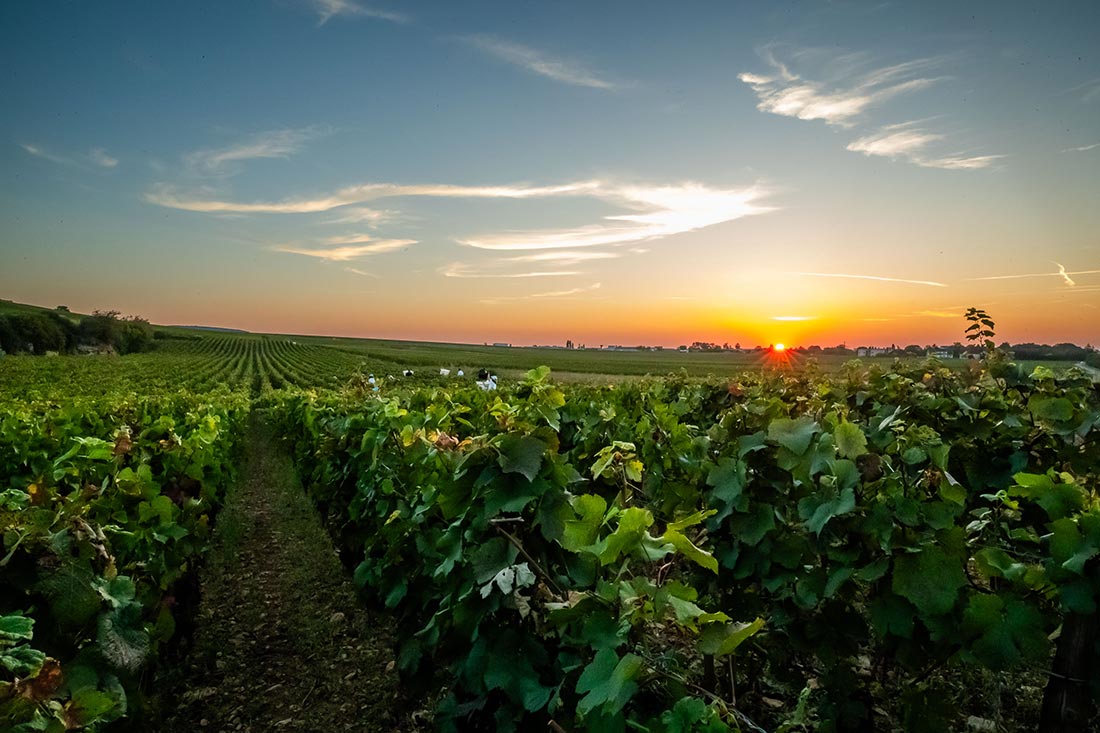
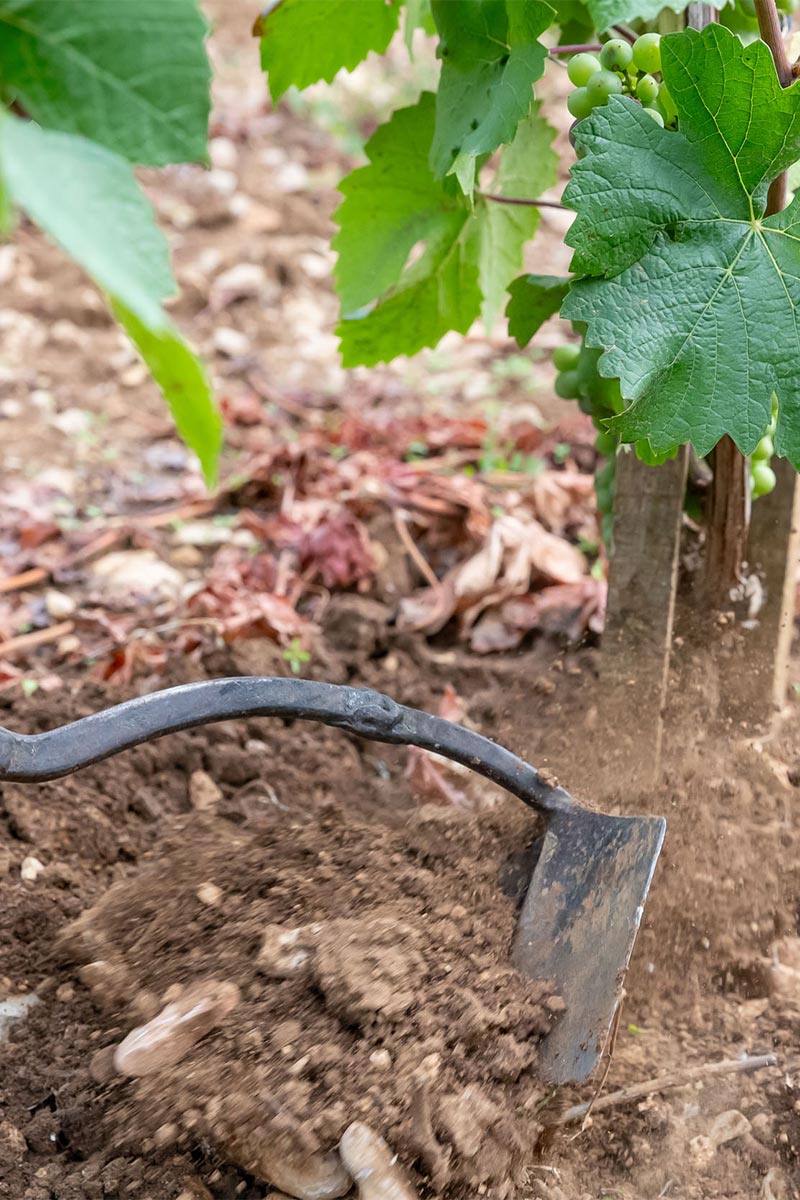
Soil maintenance
Soil maintenance is essential, enhancing the typicity of each of our terroirs and preserving the microbial activity of our soils. Ploughing work (on the surface) is carried out during the year in order to improve soil structure, promote biological activity, and control grass growth.
‘We give back to the vine what it gives to us.’ After pruning, in winter, the vine shoots are crushed, and the organic matter is naturally restored to the soil in our plots.
Annual work
We consider manual work to be even more important. ‘It’s easier to make great wines from a healthy harvest.’ Although it is demanding and meticulous, we do not skip any step in the process.
In winter, we prune, leaving long canes to ensure that future growth is evenly spaced.
In spring, strict disbudding allows us to fully control our yields and obtain grapes of optimal quality.
Then, in summer, careful trellising and targeted leaf stripping allow the grapes to reach ideal maturity levels.
The harvest
‘We love it when Pinot reveals itself!’
Balance is always important. We aim to promote aromatic complexity while preserving the structure; the tannins need to support the wine.
The harvest is the last stage in the vineyard for the vintage. Each year, about fifty people from different regions and countries come to harvest the grapes, which are exclusively hand-picked. A time of intense emotions as another year of work in the vines comes to a close.
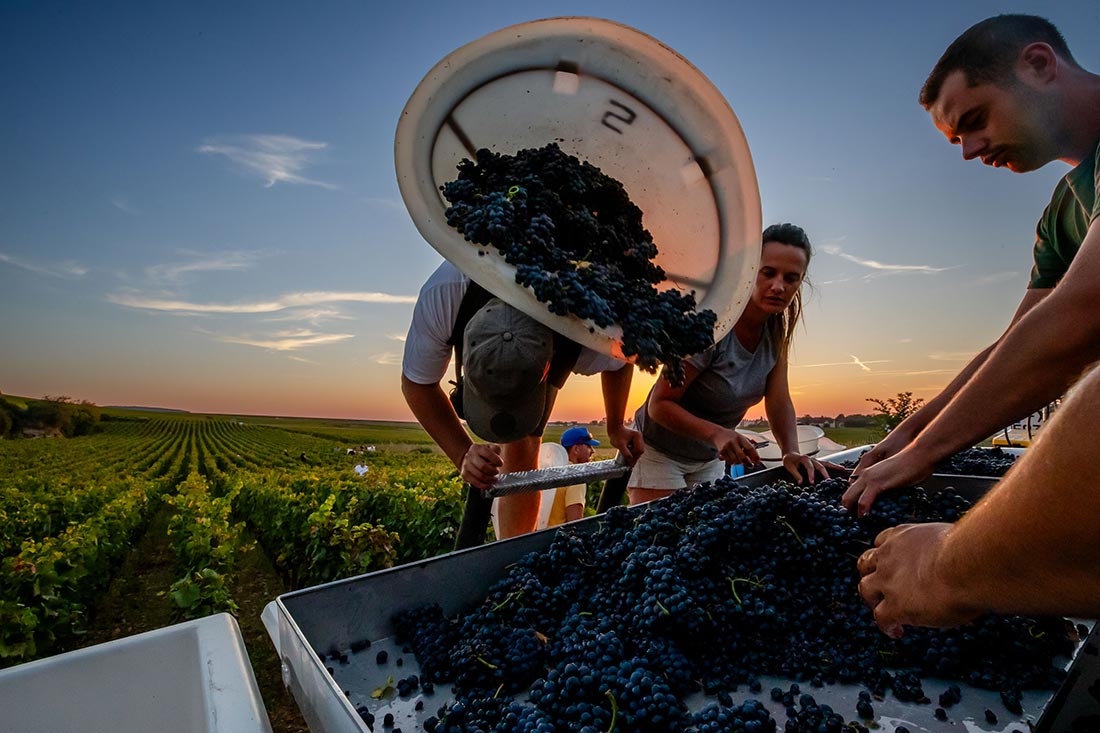
In the cellar
The work in the cellar is subtle and delicate; we allow our terroirs to express themselves, and the vintage to assert itself, so that each of our wines has its own identity.
The maturity of the grapes is carefully assessed in the vineyard, leading to wines of perfect balance and great aromatic purity.
Our modern equipment leads to gains in precision. Thermo-regulated tanks, in particular, allow us to perfectly control the temperature throughout the vatting period, which allows us to preserve the authenticity of each of our terroirs.
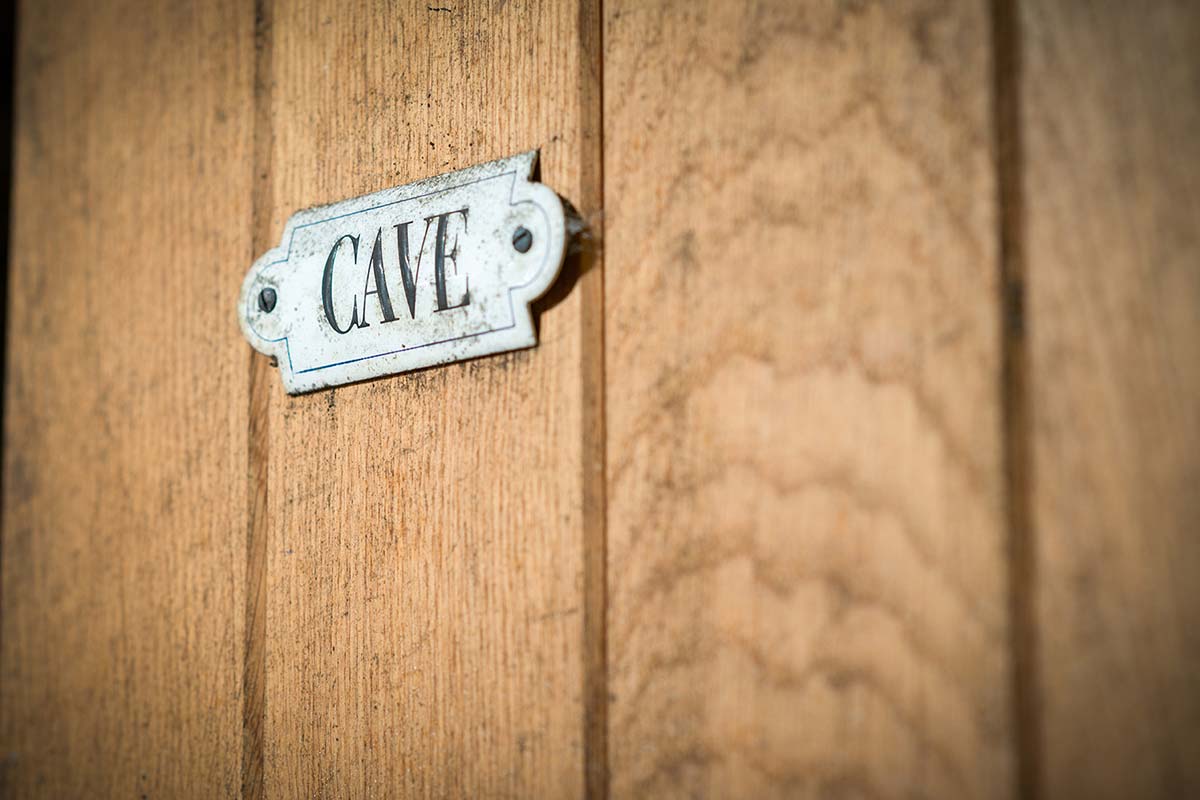
Red wines
Vinification
Our red wines come from the Pinot Noir grape variety. The grapes are sorted and destemmed before being transported via gravity into the vats. Depending on the vintage, a percentage of whole bunches may be selected and added.
The vatting last about twenty days. The harvest is first cooled to 10°C for one week in order to delicately extract colour and aromas. Alcoholic fermentation is then triggered naturally, without adding yeast. We favour light punching down at the beginning of fermentation, followed by daily pumping over in order to preserve the fruit of the terroir and promote the development of structured, intense wines that display a beautiful mouthfeel.
Once the alcoholic fermentation is complete, devatting and pressing at low pressure follow. We blend the free-run juice with the press juice. The wine then sits for several days before light débourbage is carried out, where we extract the coarse lees.
Maturation
The wines are then lowered into 228-litre French oak barrels, via gravity, in our cellars, where malolactic fermentation begins. The maturation process and the choice of wood are important in our quest for freshness and balance in our wines. ‘The wood must accompany the wine.’ We choose to use between 10 and 20% new barrels, depending on the appellation, alongside barrels from 1 to 8 years old.
After 12 months of maturation, the wine is racked and assembled in a tank where it rests; clarification takes several months. After analyses and tastings, we decide if filtration is necessary – only for the lower part the tanks.
Bottling takes place between January and March; then, the wine is stored in our cellars.
White wines
Vinification
Our white wines are made from Aligoté and Chardonnay grape varieties. When they arrive in the vat room, the crop is gently crushed before being pressed using a pneumatic press. The juice is then stored in stainless steel tanks at a temperature of 10°C for 12 hours. Débourbage is carried out in order to remove coarse lees and leave the best juice.
Alcoholic fermentation occurs naturally. During fermentation, the juice is lowered into 228-litre barrels in the cellar (into tanks for Aligoté and Hautes Côtes de Beaune).
Maturation
Maturation takes place over a period of several months to obtain elegant, pure wines with wonderful freshness. We use 10 to 15% new barrels, depending on the appellation, alongside barrels from 1 to 6 years old.
Once maturation is complete, the contents of the barrels are transferred to tanks. To clarify the wine, fining and light filtering are carried out.
Bottling follows; then, the wine is stored in our cellars.
